Over the last few months, it has been impossible not to hear about NFTs. The hype surrounding the tokens—which are marketed as proof of ownership of a digital item—has reached a fever pitch, with billions of dollars pouring into the market. To some, these non-fungible tokens represent the hottest new collector interest; to others, they represent a formidable investment vehicle; and to still others, they represent the internet’s future.
As is always the case, the reality is more complicated. In their current condition, NFTs are incapable of performing the majority of the functions for which they are frequently claimed. Due to the highly technical nature of NFTs, blockchains, and cryptocurrencies, it’s easy to oversimplify the technology’s explanation to the point of being deceptive.
Trying to explain the challenges with NFTs can be difficult, but we’ll do our best to do it clearly. No explanation, no matter how in-depth, can ever be sufficient to answer all of these questions. In light of this, it’s important to dispel several myths concerning NFTs.
NFTs Aren’t Authoritative Tokens of Ownership
The most persistently false assertion regarding NFTs is also the closest to the truth. Enthusiasts frequently assert that the fact that NFTs are essentially unique and exist on a trustless blockchain establishes that you “possess” a digital asset. There is only one token like this one, and you hold it in your cryptocurrency wallet, which implies that the object it represents is yours.
A variety of flaws can be found in this phrasing. First, NFTs can only communicate ownership (or possession, but we’ll get to that later) of the token. “With NFTs, the object you’ve bought does not tend to give you ownership of the underlying item (picture, game component, etc.) in any manner you would ordinarily transmit physical or digital art,” software engineer Molly White stated in an interview.
NFTs, on the other hand, often include a link to an asset that is hosted somewhere else. Ownership of the asset itself is not conveyed by the NFT in any way. According to White, “They’ve paid to have their wallet address carved into a database, coupled with some kind of pointer to something. In my opinion, they don’t truly ‘own’ anything.”
Ethereum (the most common NFT-mining platform) doesn’t have a mechanism for distinguishing between token ownership and token possession, as previously explained. It’s commonly accepted that if someone steals your bicycle, it’s still yours and you’re entitled to compensation. The “owner” of an NFT is whoever has the token stored in their wallet. Consequently, in cases where an NFT is lost due to phishing scams, the blockchain will consider the thief to be the rightful owner.
While centralized marketplaces such as OpenSea have occasionally intervened to halt sales of stolen assets (on their own platform, at least), this leaves the onus of determining “actual” ownership not on the NFT itself but on the marketplaces that trade them.
Additionally, an NFT is unique within the context of the blockchain on which it was produced. For example, the NFT marketplace Rarible allows users to mint tokens on three different blockchains, but what happens when two different users mint the identical digital commodity on two different blockchains? While an artist may choose to mint their work on numerous blockchains and so have a “original” on each, determining which blockchain is “authoritative” or “genuine” remains a social and platform dilemma.
Additionally, there is little to stop someone from creating numerous NFTs of the same image on the same blockchain. According to Twitter user @NFTTheft, there have been multiple instances of people on the OpenSea marketplace stealing artists’ work, producing replica NFTs, and selling them alongside the originals.
Due to the fact that the blockchain does not check that the person minting an NFT has the rights to the asset, it is up to platforms to resolve this issue (or not, as it were). “Ascertaining ownership of an asset at the time it is minted into an NFT is a social issue rather than a technical one,” White noted. “It’s difficult to do solely through programming.”
According to OpenSea’s investigation of its own marketplace, more than 80% of the NFTs offered on the marketplace were pirated artwork, fabricated collections, or spam. The firm attempted to address this issue by setting a limit on the number of free listings that users may make but reversed the decision in response to customer backlash. Meanwhile, DeviantArt has attempted to safeguard its artists using automated technologies that monitor for theft, sending over 80,000 notices of infringement to artists in five months, but this technology is clearly limited to DeviantArt users.
OpenSea has also begun authenticating accounts and collections in an attempt to counteract this issue, but verification is entirely at the discretion of OpenSea. As a result, no NFT is more authoritative proof of ownership of the digital item it refers to than, for example, a Twitter handle is. Each Twitter account is potentially unique, and claiming yours first may imply that you are the true person behind that identity. However, the 45th President of the United States retained the term “real” in his handle due to a spoof account first claiming @DonaldTrump. As with OpenSea, Twitter’s manual verification method is the only way to determine which accounts belong to genuine people. This is far from a flawless system.
To complicate matters further, marketplaces are just one way to connect with the blockchain, but anyone can do so. Therefore, even if every major NFT marketplace implemented tools to prevent stolen artwork from being minted and verified by all of its creators — a monumental and complicated task in and of itself — there is no way to prevent someone from minting stolen artwork on a blockchain like Ethereum relatively easily.
In the best-case scenario, NFTs can never be used to establish ownership of themselves. Third-party systems must continue to validate the external data—artwork, digital objects, and so forth—to which NFTs relate.”
NFTs Are Not Capable of Transferring Digital Items Between Games or Apps
One of the more ridiculous promises made about NFTs is that they will enable the actual metaverse by enabling users to transfer digital things between games or platforms. And while this is technically conceivable for relatively simple data types such as photos (which are already quite straightforward to transfer between apps), it is nearly difficult for sophisticated data types such as video game items.
Rami Ismail, a game developer, detailed several of these difficulties in a lengthy Twitter conversation, using the example of a basic six-sided die. Even the simplest 3D model contains a wealth of sophisticated data, including the model’s geometry and materials, physics and movement information, and seemingly simple information like which direction is up. Because some game engines use Y as the vertical axis and others use Z, transferring a game from one engine to another may result in an upside-down model.
A human game developer or animator can edit the 3D model asset to make it function properly in another game or engine, but this takes time and effort (and labor). Possessing an NFT of an item from one game does not automatically imply that another game supports that model.
Additionally, there is the issue of intellectual property. Consider the case of Thunderfury, Blessed Blade of the Windseeker, which you own in World of Warcraft. Blizzard owns the model, textures, and all associated materials for that item. Blizzard could theoretically issue users an NFT for the item, but no other game could import it without authorization from the business. And even if Blizzard granted clearance to another developer, they would be responsible for providing assets and ensuring that everything runs properly.
These types of crossovers are already prevalent in games such as Fortnite, which has teamed with Marvel, Star Wars, and God of War to bring characters from one game to another. Additionally, developers have offered promotional goods to gamers who have owned specific games or even achieved specific achievements for years. However, none of these collaborations require NFTs to be accomplished, marketable, or successful.
Even if NFTs could be employed to create a hypothetical external inventory system — and assuming that developers or publishers would want to do so in the first place – this represents a minuscule portion of the labor required to move things, characters, or outfits between game worlds. The majority of work is still dependent on unique humans choosing to collaborate with other specific humans, and no amount of automation in future development is likely to change that.
An artist may lose more money because of NFTs.
According to NFT supporters, artists can make money selling NFTs of their artwork, although the demand for that NFT art may be fictitious. For example, in March 2021, artist Beeple’s $69 million NFT sale made the news. There were 20 more unrelated Beeple artworks packaged together by Metapurse in January 2021 that was sold for 10 million B20 tokens a few months before the sale of the Beeple collection. To put it another way, the goal was to allow those who couldn’t afford pricey works of art to participate in the art market through the purchase of smaller sections of the collection.
He who bought Beeple in March for $69 million also held 59 percent of B20 tokens, also known as Metakovan. Just a few days before the $69 million Beeple auction ended, B20 tokens went on sale to the general public for 36 cents apiece on January 23. By the conclusion of the two weeks, the token price had risen to $23.62, a 6,461 percent increase. By the end of May, B20’s price had dropped below a dollar once again. The token is currently worth 40 cents at the time of this writing.
Beeple also had a stake of 2% in the B20 tokens he created. As a result, the most notable NFT transaction at the time had a stake in driving up demand for the artist’s work, with the buyer—the artist—standing to profit more than the seller.
NFTs that sell at all typically sell for less than $15, according to an Alan Turing Institute review of OpenSea data. The bulk of NFTs never sells at all. 1 percent of stocks traded above $1,500. An examination by Mauro Martino, director of IBM’s Visual AI Lab and one of the study’s researchers concludes that only a select few can sell items for more than $1,500. I don’t think it’s a magical location where everyone gets rich. “It’s essentially the same in every other industry.”
Large NFTs sold are difficult to verify because of the practice known as “wash trading,” where a single person sells an item on their sock puppet accounts to create the impression of high demand for the commodity. On the NFT marketplace LooksRare, which at the time had only gathered roughly $9.5 billion in trades total, one analytics outfit, CryptoSlam, discovered more than $8 billion in wash trading.
“Our paper went viral on Twitter, etc., because many people connected the concentration that we observed—that 90% of transactions are made by 10% of the wallets—as a signature of wash trading,” says Andrea Baronchelli, an associate professor at City University London who also worked on the analysis for the Alan Turing Institute. The question is whether or not we can assert that this is the case. Baronchelli continues, “I don’t know for sure.” This is how a market with a lot of wash trading might appear.” As a result, what we see is consistent with widespread wash trading, but we have no way of proving it.
If artists are selling their NFTs on marketplaces, they may wind up losing money because of poor yields and gas fees (money paid to the Ethereum miners and validators that form the Ethereum blockchain). There is an additional step for buyers and sellers who use solely traditional currency like US dollars to trade—which is to say, most people—to interact with the system. Those transactions are made possible in part by the fees charged by currency exchanges. For Martino, the 75% of sales that don’t reach $15 aren’t enough to pay expenses like gas.
Markets like OpenSea and Rarible theoretically allow artists to mint NFTs for free, but there are significant limitations. To begin with, the NFT won’t be made until someone purchases it. Even the cost of executing a transaction might be difficult to forecast because gas prices fluctuate over time and the minting fee is passed on to the buyer (which raises the purchase price for any transaction).
There was an average Ethereum transaction price of $14 to $15 over the last 30 days, but individual transactions can increase so dramatically by the hour that the same transaction can cost many times more solely depending on when it goes through.
There are only two options for artists who want to participate in NFTs. They can pay large fees to mint their work as NFTs in the hopes that enough people will buy them to cover the costs, or they can pass those costs along to the buyer and price out some of their potential customers—and in the meantime, they won’t have any record of their NFTs on the blockchain at all.
Another annoyance is the royalty function. Royalties are not included by default in NFTs. As a matter of fact, the “smart contract” that administers the NFT can include royalty payments. As with any other piece of software, these contracts are prone to errors, compatibility difficulties, and manipulation.
Most NFTs do not distinguish between being sold to a third party and being transferred from one wallet to another controlled by the original owner. Instead, the NFT must be notified of the sale through the mediation of marketplaces like OpenSea. For NFTs that are minted and sold on the marketplace’s platform, royalty payments can be enforced, but trade on other platforms can eliminate the royalty payments, either by accident or purpose. To avoid paying royalties, this is a simple way to do so.
Standardizing royalties across markets has been advocated, however it may be difficult, if not impossible, to put them into practice. While NFTs can provide certain benefits, when paired with pervasive fraud in the NFT arena, they can actually cause more problems for artists than they solve.
The Devil Is in the Details, and They Keep Changing
The majority of this article has concentrated on Ethereum, NFTs based on it, and the largest marketplaces that employ them. Since each NFT or crypto project has its own unique set of features, it’s impossible to predict precisely what can go wrong or what can be a fraud with any given project or blockchain.
Even though GoChain is compatible with Ethereum, the US Postal Service selected a more obscure mobile app platform for its Day of the Dead-inspired NFTs when it issued roughly 25,000 of them. For a one-time fee of $1, the app offers “gems” (a user-friendly interface for the underlying OMI tokens) that may be exchanged for NFTs. Each of the Day of the Dead NFTs was sold for 6 gems..
Cashing out gems earned from selling NFTs is “currently in testing,” after more than a year of not being possible at all. NFTs can be purchased with the app’s special currency, but they can only be swapped with other app users for more gems once they’ve been purchased. Users have been looking for a method to cash out their gems for at least a year, but the platform has attracted brand deals from Marvel, DC, and Star Trek during that time.
NFT and crypto projects, and the news coverage that describes them, are often motivated to simplify because of the daunting technical intricacies. To simplify things by using phrases and concepts that are easier to understand, and to refer to widely disparate projects as a single entity, despite the reality that services like the one mentioned above can operate very differently from, for instance, OpenSea, despite the fact that both “sell NFTs.”
In some cases, this simplification might lead to a lack of knowledge of the technology as it truly is. With a feature set that ranges from moonshots to the actively impossible, and fundamental security and privacy vulnerabilities that are baked into the design of the majority of important systems.



